-
EXECUTIVE SUMMARY
-
Market Overview
-
Key Findings
-
Market Segmentation
-
Competitive Landscape
-
Challenges and Opportunities
-
Future Outlook
-
MARKET INTRODUCTION
-
Definition
-
Scope of the study
-
Research Objective
-
Assumption
-
Limitations
-
RESEARCH METHODOLOGY
-
Overview
-
Data Mining
-
Secondary Research
-
Primary Research
-
Primary Interviews and Information Gathering Process
-
Breakdown of Primary Respondents
-
Forecasting Model
-
Market Size Estimation
-
Bottom-Up Approach
-
Top-Down Approach
-
Data Triangulation
-
Validation
-
MARKET DYNAMICS
-
Overview
-
Drivers
-
Restraints
-
Opportunities
-
MARKET FACTOR ANALYSIS
-
Value chain Analysis
-
Porter's Five Forces Analysis
-
Bargaining Power of Suppliers
-
Bargaining Power of Buyers
-
Threat of New Entrants
-
Threat of Substitutes
-
Intensity of Rivalry
-
COVID-19 Impact Analysis
-
Market Impact Analysis
-
Regional Impact
-
Opportunity and Threat Analysis
-
Deformity Market, BY Type of Deformity (USD Billion)
-
Congenital Deformities
-
Acquired Deformities
-
Idiopathic Deformities
-
Post-Traumatic Deformities
-
Deformity Market, BY Treatment Method (USD Billion)
-
Surgical Treatment
-
Non-Surgical Treatment
-
Rehabilitation Therapy
-
Assistive Devices
-
Deformity Market, BY Patient Demographics (USD Billion)
-
Pediatric Patients
-
Adult Patients
-
Geriatric Patients
-
Deformity Market, BY Severity Level (USD Billion)
-
Mild Deformities
-
Moderate Deformities
-
Severe Deformities
-
Deformity Market, BY Regional (USD Billion)
-
North America
-
US
-
Canada
-
Europe
-
Germany
-
UK
-
France
-
Russia
-
Italy
-
Spain
-
Rest of Europe
-
APAC
-
China
-
India
-
Japan
-
South Korea
-
Malaysia
-
Thailand
-
Indonesia
-
Rest of APAC
-
South America
-
Brazil
-
Mexico
-
Argentina
-
Rest of South America
-
MEA
-
GCC Countries
-
South Africa
-
Rest of MEA
-
Competitive Landscape
-
Overview
-
Competitive Analysis
-
Market share Analysis
-
Major Growth Strategy in the Deformity Market
-
Competitive Benchmarking
-
Leading Players in Terms of Number of Developments in the Deformity Market
-
Key developments and growth strategies
-
New Product Launch/Service Deployment
-
Merger & Acquisitions
-
Joint Ventures
-
Major Players Financial Matrix
-
Sales and Operating Income
-
Major Players R&D Expenditure. 2023
-
Company Profiles
-
Zimmer Biomet
-
Financial Overview
-
Products Offered
-
Key Developments
-
SWOT Analysis
-
Key Strategies
-
Smith and Nephew
-
Financial Overview
-
Products Offered
-
Key Developments
-
SWOT Analysis
-
Key Strategies
-
DePuy Synthes
-
Financial Overview
-
Products Offered
-
Key Developments
-
SWOT Analysis
-
Key Strategies
-
Amedica
-
Financial Overview
-
Products Offered
-
Key Developments
-
SWOT Analysis
-
Key Strategies
-
Orthofix Medical
-
Financial Overview
-
Products Offered
-
Key Developments
-
SWOT Analysis
-
Key Strategies
-
Integra LifeSciences
-
Financial Overview
-
Products Offered
-
Key Developments
-
SWOT Analysis
-
Key Strategies
-
SeaSpine
-
Financial Overview
-
Products Offered
-
Key Developments
-
SWOT Analysis
-
Key Strategies
-
Hartman
-
Financial Overview
-
Products Offered
-
Key Developments
-
SWOT Analysis
-
Key Strategies
-
Johnson and Johnson
-
Financial Overview
-
Products Offered
-
Key Developments
-
SWOT Analysis
-
Key Strategies
-
Stryker
-
Financial Overview
-
Products Offered
-
Key Developments
-
SWOT Analysis
-
Key Strategies
-
Globus Medical
-
Financial Overview
-
Products Offered
-
Key Developments
-
SWOT Analysis
-
Key Strategies
-
Roomas Orthopaedics
-
Financial Overview
-
Products Offered
-
Key Developments
-
SWOT Analysis
-
Key Strategies
-
NuVasive
-
Financial Overview
-
Products Offered
-
Key Developments
-
SWOT Analysis
-
Key Strategies
-
Medtronic
-
Financial Overview
-
Products Offered
-
Key Developments
-
SWOT Analysis
-
Key Strategies
-
B. Braun
-
Financial Overview
-
Products Offered
-
Key Developments
-
SWOT Analysis
-
Key Strategies
-
Appendix
-
References
-
Related Reports
-
LIST Of tables
-
LIST OF ASSUMPTIONS
-
North America Deformity Market SIZE ESTIMATES & FORECAST, BY TYPE OF DEFORMITY, 2019-2035 (USD Billions)
-
North America Deformity Market SIZE ESTIMATES & FORECAST, BY TREATMENT METHOD, 2019-2035 (USD Billions)
-
North America Deformity Market SIZE ESTIMATES & FORECAST, BY PATIENT DEMOGRAPHICS, 2019-2035 (USD Billions)
-
North America Deformity Market SIZE ESTIMATES & FORECAST, BY SEVERITY LEVEL, 2019-2035 (USD Billions)
-
North America Deformity Market SIZE ESTIMATES & FORECAST, BY REGIONAL, 2019-2035 (USD Billions)
-
US Deformity Market SIZE ESTIMATES & FORECAST, BY TYPE OF DEFORMITY, 2019-2035 (USD Billions)
-
US Deformity Market SIZE ESTIMATES & FORECAST, BY TREATMENT METHOD, 2019-2035 (USD Billions)
-
US Deformity Market SIZE ESTIMATES & FORECAST, BY PATIENT DEMOGRAPHICS, 2019-2035 (USD Billions)
-
US Deformity Market SIZE ESTIMATES & FORECAST, BY SEVERITY LEVEL, 2019-2035 (USD Billions)
-
US Deformity Market SIZE ESTIMATES & FORECAST, BY REGIONAL, 2019-2035 (USD Billions)
-
Canada Deformity Market SIZE ESTIMATES & FORECAST, BY TYPE OF DEFORMITY, 2019-2035 (USD Billions)
-
Canada Deformity Market SIZE ESTIMATES & FORECAST, BY TREATMENT METHOD, 2019-2035 (USD Billions)
-
Canada Deformity Market SIZE ESTIMATES & FORECAST, BY PATIENT DEMOGRAPHICS, 2019-2035 (USD Billions)
-
Canada Deformity Market SIZE ESTIMATES & FORECAST, BY SEVERITY LEVEL, 2019-2035 (USD Billions)
-
Canada Deformity Market SIZE ESTIMATES & FORECAST, BY REGIONAL, 2019-2035 (USD Billions)
-
Europe Deformity Market SIZE ESTIMATES & FORECAST, BY TYPE OF DEFORMITY, 2019-2035 (USD Billions)
-
Europe Deformity Market SIZE ESTIMATES & FORECAST, BY TREATMENT METHOD, 2019-2035 (USD Billions)
-
Europe Deformity Market SIZE ESTIMATES & FORECAST, BY PATIENT DEMOGRAPHICS, 2019-2035 (USD Billions)
-
Europe Deformity Market SIZE ESTIMATES & FORECAST, BY SEVERITY LEVEL, 2019-2035 (USD Billions)
-
Europe Deformity Market SIZE ESTIMATES & FORECAST, BY REGIONAL, 2019-2035 (USD Billions)
-
Germany Deformity Market SIZE ESTIMATES & FORECAST, BY TYPE OF DEFORMITY, 2019-2035 (USD Billions)
-
Germany Deformity Market SIZE ESTIMATES & FORECAST, BY TREATMENT METHOD, 2019-2035 (USD Billions)
-
Germany Deformity Market SIZE ESTIMATES & FORECAST, BY PATIENT DEMOGRAPHICS, 2019-2035 (USD Billions)
-
Germany Deformity Market SIZE ESTIMATES & FORECAST, BY SEVERITY LEVEL, 2019-2035 (USD Billions)
-
Germany Deformity Market SIZE ESTIMATES & FORECAST, BY REGIONAL, 2019-2035 (USD Billions)
-
UK Deformity Market SIZE ESTIMATES & FORECAST, BY TYPE OF DEFORMITY, 2019-2035 (USD Billions)
-
UK Deformity Market SIZE ESTIMATES & FORECAST, BY TREATMENT METHOD, 2019-2035 (USD Billions)
-
UK Deformity Market SIZE ESTIMATES & FORECAST, BY PATIENT DEMOGRAPHICS, 2019-2035 (USD Billions)
-
UK Deformity Market SIZE ESTIMATES & FORECAST, BY SEVERITY LEVEL, 2019-2035 (USD Billions)
-
UK Deformity Market SIZE ESTIMATES & FORECAST, BY REGIONAL, 2019-2035 (USD Billions)
-
France Deformity Market SIZE ESTIMATES & FORECAST, BY TYPE OF DEFORMITY, 2019-2035 (USD Billions)
-
France Deformity Market SIZE ESTIMATES & FORECAST, BY TREATMENT METHOD, 2019-2035 (USD Billions)
-
France Deformity Market SIZE ESTIMATES & FORECAST, BY PATIENT DEMOGRAPHICS, 2019-2035 (USD Billions)
-
France Deformity Market SIZE ESTIMATES & FORECAST, BY SEVERITY LEVEL, 2019-2035 (USD Billions)
-
France Deformity Market SIZE ESTIMATES & FORECAST, BY REGIONAL, 2019-2035 (USD Billions)
-
Russia Deformity Market SIZE ESTIMATES & FORECAST, BY TYPE OF DEFORMITY, 2019-2035 (USD Billions)
-
Russia Deformity Market SIZE ESTIMATES & FORECAST, BY TREATMENT METHOD, 2019-2035 (USD Billions)
-
Russia Deformity Market SIZE ESTIMATES & FORECAST, BY PATIENT DEMOGRAPHICS, 2019-2035 (USD Billions)
-
Russia Deformity Market SIZE ESTIMATES & FORECAST, BY SEVERITY LEVEL, 2019-2035 (USD Billions)
-
Russia Deformity Market SIZE ESTIMATES & FORECAST, BY REGIONAL, 2019-2035 (USD Billions)
-
Italy Deformity Market SIZE ESTIMATES & FORECAST, BY TYPE OF DEFORMITY, 2019-2035 (USD Billions)
-
Italy Deformity Market SIZE ESTIMATES & FORECAST, BY TREATMENT METHOD, 2019-2035 (USD Billions)
-
Italy Deformity Market SIZE ESTIMATES & FORECAST, BY PATIENT DEMOGRAPHICS, 2019-2035 (USD Billions)
-
Italy Deformity Market SIZE ESTIMATES & FORECAST, BY SEVERITY LEVEL, 2019-2035 (USD Billions)
-
Italy Deformity Market SIZE ESTIMATES & FORECAST, BY REGIONAL, 2019-2035 (USD Billions)
-
Spain Deformity Market SIZE ESTIMATES & FORECAST, BY TYPE OF DEFORMITY, 2019-2035 (USD Billions)
-
Spain Deformity Market SIZE ESTIMATES & FORECAST, BY TREATMENT METHOD, 2019-2035 (USD Billions)
-
Spain Deformity Market SIZE ESTIMATES & FORECAST, BY PATIENT DEMOGRAPHICS, 2019-2035 (USD Billions)
-
Spain Deformity Market SIZE ESTIMATES & FORECAST, BY SEVERITY LEVEL, 2019-2035 (USD Billions)
-
Spain Deformity Market SIZE ESTIMATES & FORECAST, BY REGIONAL, 2019-2035 (USD Billions)
-
Rest of Europe Deformity Market SIZE ESTIMATES & FORECAST, BY TYPE OF DEFORMITY, 2019-2035 (USD Billions)
-
Rest of Europe Deformity Market SIZE ESTIMATES & FORECAST, BY TREATMENT METHOD, 2019-2035 (USD Billions)
-
Rest of Europe Deformity Market SIZE ESTIMATES & FORECAST, BY PATIENT DEMOGRAPHICS, 2019-2035 (USD Billions)
-
Rest of Europe Deformity Market SIZE ESTIMATES & FORECAST, BY SEVERITY LEVEL, 2019-2035 (USD Billions)
-
Rest of Europe Deformity Market SIZE ESTIMATES & FORECAST, BY REGIONAL, 2019-2035 (USD Billions)
-
APAC Deformity Market SIZE ESTIMATES & FORECAST, BY TYPE OF DEFORMITY, 2019-2035 (USD Billions)
-
APAC Deformity Market SIZE ESTIMATES & FORECAST, BY TREATMENT METHOD, 2019-2035 (USD Billions)
-
APAC Deformity Market SIZE ESTIMATES & FORECAST, BY PATIENT DEMOGRAPHICS, 2019-2035 (USD Billions)
-
APAC Deformity Market SIZE ESTIMATES & FORECAST, BY SEVERITY LEVEL, 2019-2035 (USD Billions)
-
APAC Deformity Market SIZE ESTIMATES & FORECAST, BY REGIONAL, 2019-2035 (USD Billions)
-
China Deformity Market SIZE ESTIMATES & FORECAST, BY TYPE OF DEFORMITY, 2019-2035 (USD Billions)
-
China Deformity Market SIZE ESTIMATES & FORECAST, BY TREATMENT METHOD, 2019-2035 (USD Billions)
-
China Deformity Market SIZE ESTIMATES & FORECAST, BY PATIENT DEMOGRAPHICS, 2019-2035 (USD Billions)
-
China Deformity Market SIZE ESTIMATES & FORECAST, BY SEVERITY LEVEL, 2019-2035 (USD Billions)
-
China Deformity Market SIZE ESTIMATES & FORECAST, BY REGIONAL, 2019-2035 (USD Billions)
-
India Deformity Market SIZE ESTIMATES & FORECAST, BY TYPE OF DEFORMITY, 2019-2035 (USD Billions)
-
India Deformity Market SIZE ESTIMATES & FORECAST, BY TREATMENT METHOD, 2019-2035 (USD Billions)
-
India Deformity Market SIZE ESTIMATES & FORECAST, BY PATIENT DEMOGRAPHICS, 2019-2035 (USD Billions)
-
India Deformity Market SIZE ESTIMATES & FORECAST, BY SEVERITY LEVEL, 2019-2035 (USD Billions)
-
India Deformity Market SIZE ESTIMATES & FORECAST, BY REGIONAL, 2019-2035 (USD Billions)
-
Japan Deformity Market SIZE ESTIMATES & FORECAST, BY TYPE OF DEFORMITY, 2019-2035 (USD Billions)
-
Japan Deformity Market SIZE ESTIMATES & FORECAST, BY TREATMENT METHOD, 2019-2035 (USD Billions)
-
Japan Deformity Market SIZE ESTIMATES & FORECAST, BY PATIENT DEMOGRAPHICS, 2019-2035 (USD Billions)
-
Japan Deformity Market SIZE ESTIMATES & FORECAST, BY SEVERITY LEVEL, 2019-2035 (USD Billions)
-
Japan Deformity Market SIZE ESTIMATES & FORECAST, BY REGIONAL, 2019-2035 (USD Billions)
-
South Korea Deformity Market SIZE ESTIMATES & FORECAST, BY TYPE OF DEFORMITY, 2019-2035 (USD Billions)
-
South Korea Deformity Market SIZE ESTIMATES & FORECAST, BY TREATMENT METHOD, 2019-2035 (USD Billions)
-
South Korea Deformity Market SIZE ESTIMATES & FORECAST, BY PATIENT DEMOGRAPHICS, 2019-2035 (USD Billions)
-
South Korea Deformity Market SIZE ESTIMATES & FORECAST, BY SEVERITY LEVEL, 2019-2035 (USD Billions)
-
South Korea Deformity Market SIZE ESTIMATES & FORECAST, BY REGIONAL, 2019-2035 (USD Billions)
-
Malaysia Deformity Market SIZE ESTIMATES & FORECAST, BY TYPE OF DEFORMITY, 2019-2035 (USD Billions)
-
Malaysia Deformity Market SIZE ESTIMATES & FORECAST, BY TREATMENT METHOD, 2019-2035 (USD Billions)
-
Malaysia Deformity Market SIZE ESTIMATES & FORECAST, BY PATIENT DEMOGRAPHICS, 2019-2035 (USD Billions)
-
Malaysia Deformity Market SIZE ESTIMATES & FORECAST, BY SEVERITY LEVEL, 2019-2035 (USD Billions)
-
Malaysia Deformity Market SIZE ESTIMATES & FORECAST, BY REGIONAL, 2019-2035 (USD Billions)
-
Thailand Deformity Market SIZE ESTIMATES & FORECAST, BY TYPE OF DEFORMITY, 2019-2035 (USD Billions)
-
Thailand Deformity Market SIZE ESTIMATES & FORECAST, BY TREATMENT METHOD, 2019-2035 (USD Billions)
-
Thailand Deformity Market SIZE ESTIMATES & FORECAST, BY PATIENT DEMOGRAPHICS, 2019-2035 (USD Billions)
-
Thailand Deformity Market SIZE ESTIMATES & FORECAST, BY SEVERITY LEVEL, 2019-2035 (USD Billions)
-
Thailand Deformity Market SIZE ESTIMATES & FORECAST, BY REGIONAL, 2019-2035 (USD Billions)
-
Indonesia Deformity Market SIZE ESTIMATES & FORECAST, BY TYPE OF DEFORMITY, 2019-2035 (USD Billions)
-
Indonesia Deformity Market SIZE ESTIMATES & FORECAST, BY TREATMENT METHOD, 2019-2035 (USD Billions)
-
Indonesia Deformity Market SIZE ESTIMATES & FORECAST, BY PATIENT DEMOGRAPHICS, 2019-2035 (USD Billions)
-
Indonesia Deformity Market SIZE ESTIMATES & FORECAST, BY SEVERITY LEVEL, 2019-2035 (USD Billions)
-
Indonesia Deformity Market SIZE ESTIMATES & FORECAST, BY REGIONAL, 2019-2035 (USD Billions)
-
Rest of APAC Deformity Market SIZE ESTIMATES & FORECAST, BY TYPE OF DEFORMITY, 2019-2035 (USD Billions)
-
Rest of APAC Deformity Market SIZE ESTIMATES & FORECAST, BY TREATMENT METHOD, 2019-2035 (USD Billions)
-
Rest of APAC Deformity Market SIZE ESTIMATES & FORECAST, BY PATIENT DEMOGRAPHICS, 2019-2035 (USD Billions)
-
Rest of APAC Deformity Market SIZE ESTIMATES & FORECAST, BY SEVERITY LEVEL, 2019-2035 (USD Billions)
-
Rest of APAC Deformity Market SIZE ESTIMATES & FORECAST, BY REGIONAL, 2019-2035 (USD Billions)
-
South America Deformity Market SIZE ESTIMATES & FORECAST, BY TYPE OF DEFORMITY, 2019-2035 (USD Billions)
-
South America Deformity Market SIZE ESTIMATES & FORECAST, BY TREATMENT METHOD, 2019-2035 (USD Billions)
-
South America Deformity Market SIZE ESTIMATES & FORECAST, BY PATIENT DEMOGRAPHICS, 2019-2035 (USD Billions)
-
South America Deformity Market SIZE ESTIMATES & FORECAST, BY SEVERITY LEVEL, 2019-2035 (USD Billions)
-
South America Deformity Market SIZE ESTIMATES & FORECAST, BY REGIONAL, 2019-2035 (USD Billions)
-
Brazil Deformity Market SIZE ESTIMATES & FORECAST, BY TYPE OF DEFORMITY, 2019-2035 (USD Billions)
-
Brazil Deformity Market SIZE ESTIMATES & FORECAST, BY TREATMENT METHOD, 2019-2035 (USD Billions)
-
Brazil Deformity Market SIZE ESTIMATES & FORECAST, BY PATIENT DEMOGRAPHICS, 2019-2035 (USD Billions)
-
Brazil Deformity Market SIZE ESTIMATES & FORECAST, BY SEVERITY LEVEL, 2019-2035 (USD Billions)
-
Brazil Deformity Market SIZE ESTIMATES & FORECAST, BY REGIONAL, 2019-2035 (USD Billions)
-
Mexico Deformity Market SIZE ESTIMATES & FORECAST, BY TYPE OF DEFORMITY, 2019-2035 (USD Billions)
-
Mexico Deformity Market SIZE ESTIMATES & FORECAST, BY TREATMENT METHOD, 2019-2035 (USD Billions)
-
Mexico Deformity Market SIZE ESTIMATES & FORECAST, BY PATIENT DEMOGRAPHICS, 2019-2035 (USD Billions)
-
Mexico Deformity Market SIZE ESTIMATES & FORECAST, BY SEVERITY LEVEL, 2019-2035 (USD Billions)
-
Mexico Deformity Market SIZE ESTIMATES & FORECAST, BY REGIONAL, 2019-2035 (USD Billions)
-
Argentina Deformity Market SIZE ESTIMATES & FORECAST, BY TYPE OF DEFORMITY, 2019-2035 (USD Billions)
-
Argentina Deformity Market SIZE ESTIMATES & FORECAST, BY TREATMENT METHOD, 2019-2035 (USD Billions)
-
Argentina Deformity Market SIZE ESTIMATES & FORECAST, BY PATIENT DEMOGRAPHICS, 2019-2035 (USD Billions)
-
Argentina Deformity Market SIZE ESTIMATES & FORECAST, BY SEVERITY LEVEL, 2019-2035 (USD Billions)
-
Argentina Deformity Market SIZE ESTIMATES & FORECAST, BY REGIONAL, 2019-2035 (USD Billions)
-
Rest of South America Deformity Market SIZE ESTIMATES & FORECAST, BY TYPE OF DEFORMITY, 2019-2035 (USD Billions)
-
Rest of South America Deformity Market SIZE ESTIMATES & FORECAST, BY TREATMENT METHOD, 2019-2035 (USD Billions)
-
Rest of South America Deformity Market SIZE ESTIMATES & FORECAST, BY PATIENT DEMOGRAPHICS, 2019-2035 (USD Billions)
-
Rest of South America Deformity Market SIZE ESTIMATES & FORECAST, BY SEVERITY LEVEL, 2019-2035 (USD Billions)
-
Rest of South America Deformity Market SIZE ESTIMATES & FORECAST, BY REGIONAL, 2019-2035 (USD Billions)
-
MEA Deformity Market SIZE ESTIMATES & FORECAST, BY TYPE OF DEFORMITY, 2019-2035 (USD Billions)
-
MEA Deformity Market SIZE ESTIMATES & FORECAST, BY TREATMENT METHOD, 2019-2035 (USD Billions)
-
MEA Deformity Market SIZE ESTIMATES & FORECAST, BY PATIENT DEMOGRAPHICS, 2019-2035 (USD Billions)
-
MEA Deformity Market SIZE ESTIMATES & FORECAST, BY SEVERITY LEVEL, 2019-2035 (USD Billions)
-
MEA Deformity Market SIZE ESTIMATES & FORECAST, BY REGIONAL, 2019-2035 (USD Billions)
-
GCC Countries Deformity Market SIZE ESTIMATES & FORECAST, BY TYPE OF DEFORMITY, 2019-2035 (USD Billions)
-
GCC Countries Deformity Market SIZE ESTIMATES & FORECAST, BY TREATMENT METHOD, 2019-2035 (USD Billions)
-
GCC Countries Deformity Market SIZE ESTIMATES & FORECAST, BY PATIENT DEMOGRAPHICS, 2019-2035 (USD Billions)
-
GCC Countries Deformity Market SIZE ESTIMATES & FORECAST, BY SEVERITY LEVEL, 2019-2035 (USD Billions)
-
GCC Countries Deformity Market SIZE ESTIMATES & FORECAST, BY REGIONAL, 2019-2035 (USD Billions)
-
South Africa Deformity Market SIZE ESTIMATES & FORECAST, BY TYPE OF DEFORMITY, 2019-2035 (USD Billions)
-
South Africa Deformity Market SIZE ESTIMATES & FORECAST, BY TREATMENT METHOD, 2019-2035 (USD Billions)
-
South Africa Deformity Market SIZE ESTIMATES & FORECAST, BY PATIENT DEMOGRAPHICS, 2019-2035 (USD Billions)
-
South Africa Deformity Market SIZE ESTIMATES & FORECAST, BY SEVERITY LEVEL, 2019-2035 (USD Billions)
-
South Africa Deformity Market SIZE ESTIMATES & FORECAST, BY REGIONAL, 2019-2035 (USD Billions)
-
Rest of MEA Deformity Market SIZE ESTIMATES & FORECAST, BY TYPE OF DEFORMITY, 2019-2035 (USD Billions)
-
Rest of MEA Deformity Market SIZE ESTIMATES & FORECAST, BY TREATMENT METHOD, 2019-2035 (USD Billions)
-
Rest of MEA Deformity Market SIZE ESTIMATES & FORECAST, BY PATIENT DEMOGRAPHICS, 2019-2035 (USD Billions)
-
Rest of MEA Deformity Market SIZE ESTIMATES & FORECAST, BY SEVERITY LEVEL, 2019-2035 (USD Billions)
-
Rest of MEA Deformity Market SIZE ESTIMATES & FORECAST, BY REGIONAL, 2019-2035 (USD Billions)
-
PRODUCT LAUNCH/PRODUCT DEVELOPMENT/APPROVAL
-
ACQUISITION/PARTNERSHIP
-
LIST Of figures
-
MARKET SYNOPSIS
-
NORTH AMERICA DEFORMITY MARKET ANALYSIS
-
US DEFORMITY MARKET ANALYSIS BY TYPE OF DEFORMITY
-
US DEFORMITY MARKET ANALYSIS BY TREATMENT METHOD
-
US DEFORMITY MARKET ANALYSIS BY PATIENT DEMOGRAPHICS
-
US DEFORMITY MARKET ANALYSIS BY SEVERITY LEVEL
-
US DEFORMITY MARKET ANALYSIS BY REGIONAL
-
CANADA DEFORMITY MARKET ANALYSIS BY TYPE OF DEFORMITY
-
CANADA DEFORMITY MARKET ANALYSIS BY TREATMENT METHOD
-
CANADA DEFORMITY MARKET ANALYSIS BY PATIENT DEMOGRAPHICS
-
CANADA DEFORMITY MARKET ANALYSIS BY SEVERITY LEVEL
-
CANADA DEFORMITY MARKET ANALYSIS BY REGIONAL
-
EUROPE DEFORMITY MARKET ANALYSIS
-
GERMANY DEFORMITY MARKET ANALYSIS BY TYPE OF DEFORMITY
-
GERMANY DEFORMITY MARKET ANALYSIS BY TREATMENT METHOD
-
GERMANY DEFORMITY MARKET ANALYSIS BY PATIENT DEMOGRAPHICS
-
GERMANY DEFORMITY MARKET ANALYSIS BY SEVERITY LEVEL
-
GERMANY DEFORMITY MARKET ANALYSIS BY REGIONAL
-
UK DEFORMITY MARKET ANALYSIS BY TYPE OF DEFORMITY
-
UK DEFORMITY MARKET ANALYSIS BY TREATMENT METHOD
-
UK DEFORMITY MARKET ANALYSIS BY PATIENT DEMOGRAPHICS
-
UK DEFORMITY MARKET ANALYSIS BY SEVERITY LEVEL
-
UK DEFORMITY MARKET ANALYSIS BY REGIONAL
-
FRANCE DEFORMITY MARKET ANALYSIS BY TYPE OF DEFORMITY
-
FRANCE DEFORMITY MARKET ANALYSIS BY TREATMENT METHOD
-
FRANCE DEFORMITY MARKET ANALYSIS BY PATIENT DEMOGRAPHICS
-
FRANCE DEFORMITY MARKET ANALYSIS BY SEVERITY LEVEL
-
FRANCE DEFORMITY MARKET ANALYSIS BY REGIONAL
-
RUSSIA DEFORMITY MARKET ANALYSIS BY TYPE OF DEFORMITY
-
RUSSIA DEFORMITY MARKET ANALYSIS BY TREATMENT METHOD
-
RUSSIA DEFORMITY MARKET ANALYSIS BY PATIENT DEMOGRAPHICS
-
RUSSIA DEFORMITY MARKET ANALYSIS BY SEVERITY LEVEL
-
RUSSIA DEFORMITY MARKET ANALYSIS BY REGIONAL
-
ITALY DEFORMITY MARKET ANALYSIS BY TYPE OF DEFORMITY
-
ITALY DEFORMITY MARKET ANALYSIS BY TREATMENT METHOD
-
ITALY DEFORMITY MARKET ANALYSIS BY PATIENT DEMOGRAPHICS
-
ITALY DEFORMITY MARKET ANALYSIS BY SEVERITY LEVEL
-
ITALY DEFORMITY MARKET ANALYSIS BY REGIONAL
-
SPAIN DEFORMITY MARKET ANALYSIS BY TYPE OF DEFORMITY
-
SPAIN DEFORMITY MARKET ANALYSIS BY TREATMENT METHOD
-
SPAIN DEFORMITY MARKET ANALYSIS BY PATIENT DEMOGRAPHICS
-
SPAIN DEFORMITY MARKET ANALYSIS BY SEVERITY LEVEL
-
SPAIN DEFORMITY MARKET ANALYSIS BY REGIONAL
-
REST OF EUROPE DEFORMITY MARKET ANALYSIS BY TYPE OF DEFORMITY
-
REST OF EUROPE DEFORMITY MARKET ANALYSIS BY TREATMENT METHOD
-
REST OF EUROPE DEFORMITY MARKET ANALYSIS BY PATIENT DEMOGRAPHICS
-
REST OF EUROPE DEFORMITY MARKET ANALYSIS BY SEVERITY LEVEL
-
REST OF EUROPE DEFORMITY MARKET ANALYSIS BY REGIONAL
-
APAC DEFORMITY MARKET ANALYSIS
-
CHINA DEFORMITY MARKET ANALYSIS BY TYPE OF DEFORMITY
-
CHINA DEFORMITY MARKET ANALYSIS BY TREATMENT METHOD
-
CHINA DEFORMITY MARKET ANALYSIS BY PATIENT DEMOGRAPHICS
-
CHINA DEFORMITY MARKET ANALYSIS BY SEVERITY LEVEL
-
CHINA DEFORMITY MARKET ANALYSIS BY REGIONAL
-
INDIA DEFORMITY MARKET ANALYSIS BY TYPE OF DEFORMITY
-
INDIA DEFORMITY MARKET ANALYSIS BY TREATMENT METHOD
-
INDIA DEFORMITY MARKET ANALYSIS BY PATIENT DEMOGRAPHICS
-
INDIA DEFORMITY MARKET ANALYSIS BY SEVERITY LEVEL
-
INDIA DEFORMITY MARKET ANALYSIS BY REGIONAL
-
JAPAN DEFORMITY MARKET ANALYSIS BY TYPE OF DEFORMITY
-
JAPAN DEFORMITY MARKET ANALYSIS BY TREATMENT METHOD
-
JAPAN DEFORMITY MARKET ANALYSIS BY PATIENT DEMOGRAPHICS
-
JAPAN DEFORMITY MARKET ANALYSIS BY SEVERITY LEVEL
-
JAPAN DEFORMITY MARKET ANALYSIS BY REGIONAL
-
SOUTH KOREA DEFORMITY MARKET ANALYSIS BY TYPE OF DEFORMITY
-
SOUTH KOREA DEFORMITY MARKET ANALYSIS BY TREATMENT METHOD
-
SOUTH KOREA DEFORMITY MARKET ANALYSIS BY PATIENT DEMOGRAPHICS
-
SOUTH KOREA DEFORMITY MARKET ANALYSIS BY SEVERITY LEVEL
-
SOUTH KOREA DEFORMITY MARKET ANALYSIS BY REGIONAL
-
MALAYSIA DEFORMITY MARKET ANALYSIS BY TYPE OF DEFORMITY
-
MALAYSIA DEFORMITY MARKET ANALYSIS BY TREATMENT METHOD
-
MALAYSIA DEFORMITY MARKET ANALYSIS BY PATIENT DEMOGRAPHICS
-
MALAYSIA DEFORMITY MARKET ANALYSIS BY SEVERITY LEVEL
-
MALAYSIA DEFORMITY MARKET ANALYSIS BY REGIONAL
-
THAILAND DEFORMITY MARKET ANALYSIS BY TYPE OF DEFORMITY
-
THAILAND DEFORMITY MARKET ANALYSIS BY TREATMENT METHOD
-
THAILAND DEFORMITY MARKET ANALYSIS BY PATIENT DEMOGRAPHICS
-
THAILAND DEFORMITY MARKET ANALYSIS BY SEVERITY LEVEL
-
THAILAND DEFORMITY MARKET ANALYSIS BY REGIONAL
-
INDONESIA DEFORMITY MARKET ANALYSIS BY TYPE OF DEFORMITY
-
INDONESIA DEFORMITY MARKET ANALYSIS BY TREATMENT METHOD
-
INDONESIA DEFORMITY MARKET ANALYSIS BY PATIENT DEMOGRAPHICS
-
INDONESIA DEFORMITY MARKET ANALYSIS BY SEVERITY LEVEL
-
INDONESIA DEFORMITY MARKET ANALYSIS BY REGIONAL
-
REST OF APAC DEFORMITY MARKET ANALYSIS BY TYPE OF DEFORMITY
-
REST OF APAC DEFORMITY MARKET ANALYSIS BY TREATMENT METHOD
-
REST OF APAC DEFORMITY MARKET ANALYSIS BY PATIENT DEMOGRAPHICS
-
REST OF APAC DEFORMITY MARKET ANALYSIS BY SEVERITY LEVEL
-
REST OF APAC DEFORMITY MARKET ANALYSIS BY REGIONAL
-
SOUTH AMERICA DEFORMITY MARKET ANALYSIS
-
BRAZIL DEFORMITY MARKET ANALYSIS BY TYPE OF DEFORMITY
-
BRAZIL DEFORMITY MARKET ANALYSIS BY TREATMENT METHOD
-
BRAZIL DEFORMITY MARKET ANALYSIS BY PATIENT DEMOGRAPHICS
-
BRAZIL DEFORMITY MARKET ANALYSIS BY SEVERITY LEVEL
-
BRAZIL DEFORMITY MARKET ANALYSIS BY REGIONAL
-
MEXICO DEFORMITY MARKET ANALYSIS BY TYPE OF DEFORMITY
-
MEXICO DEFORMITY MARKET ANALYSIS BY TREATMENT METHOD
-
MEXICO DEFORMITY MARKET ANALYSIS BY PATIENT DEMOGRAPHICS
-
MEXICO DEFORMITY MARKET ANALYSIS BY SEVERITY LEVEL
-
MEXICO DEFORMITY MARKET ANALYSIS BY REGIONAL
-
ARGENTINA DEFORMITY MARKET ANALYSIS BY TYPE OF DEFORMITY
-
ARGENTINA DEFORMITY MARKET ANALYSIS BY TREATMENT METHOD
-
ARGENTINA DEFORMITY MARKET ANALYSIS BY PATIENT DEMOGRAPHICS
-
ARGENTINA DEFORMITY MARKET ANALYSIS BY SEVERITY LEVEL
-
ARGENTINA DEFORMITY MARKET ANALYSIS BY REGIONAL
-
REST OF SOUTH AMERICA DEFORMITY MARKET ANALYSIS BY TYPE OF DEFORMITY
-
REST OF SOUTH AMERICA DEFORMITY MARKET ANALYSIS BY TREATMENT METHOD
-
REST OF SOUTH AMERICA DEFORMITY MARKET ANALYSIS BY PATIENT DEMOGRAPHICS
-
REST OF SOUTH AMERICA DEFORMITY MARKET ANALYSIS BY SEVERITY LEVEL
-
REST OF SOUTH AMERICA DEFORMITY MARKET ANALYSIS BY REGIONAL
-
MEA DEFORMITY MARKET ANALYSIS
-
GCC COUNTRIES DEFORMITY MARKET ANALYSIS BY TYPE OF DEFORMITY
-
GCC COUNTRIES DEFORMITY MARKET ANALYSIS BY TREATMENT METHOD
-
GCC COUNTRIES DEFORMITY MARKET ANALYSIS BY PATIENT DEMOGRAPHICS
-
GCC COUNTRIES DEFORMITY MARKET ANALYSIS BY SEVERITY LEVEL
-
GCC COUNTRIES DEFORMITY MARKET ANALYSIS BY REGIONAL
-
SOUTH AFRICA DEFORMITY MARKET ANALYSIS BY TYPE OF DEFORMITY
-
SOUTH AFRICA DEFORMITY MARKET ANALYSIS BY TREATMENT METHOD
-
SOUTH AFRICA DEFORMITY MARKET ANALYSIS BY PATIENT DEMOGRAPHICS
-
SOUTH AFRICA DEFORMITY MARKET ANALYSIS BY SEVERITY LEVEL
-
SOUTH AFRICA DEFORMITY MARKET ANALYSIS BY REGIONAL
-
REST OF MEA DEFORMITY MARKET ANALYSIS BY TYPE OF DEFORMITY
-
REST OF MEA DEFORMITY MARKET ANALYSIS BY TREATMENT METHOD
-
REST OF MEA DEFORMITY MARKET ANALYSIS BY PATIENT DEMOGRAPHICS
-
REST OF MEA DEFORMITY MARKET ANALYSIS BY SEVERITY LEVEL
-
REST OF MEA DEFORMITY MARKET ANALYSIS BY REGIONAL
-
KEY BUYING CRITERIA OF DEFORMITY MARKET
-
RESEARCH PROCESS OF MRFR
-
DRO ANALYSIS OF DEFORMITY MARKET
-
DRIVERS IMPACT ANALYSIS: DEFORMITY MARKET
-
RESTRAINTS IMPACT ANALYSIS: DEFORMITY MARKET
-
SUPPLY / VALUE CHAIN: DEFORMITY MARKET
-
DEFORMITY MARKET, BY TYPE OF DEFORMITY, 2025 (% SHARE)
-
DEFORMITY MARKET, BY TYPE OF DEFORMITY, 2019 TO 2035 (USD Billions)
-
DEFORMITY MARKET, BY TREATMENT METHOD, 2025 (% SHARE)
-
DEFORMITY MARKET, BY TREATMENT METHOD, 2019 TO 2035 (USD Billions)
-
DEFORMITY MARKET, BY PATIENT DEMOGRAPHICS, 2025 (% SHARE)
-
DEFORMITY MARKET, BY PATIENT DEMOGRAPHICS, 2019 TO 2035 (USD Billions)
-
DEFORMITY MARKET, BY SEVERITY LEVEL, 2025 (% SHARE)
-
DEFORMITY MARKET, BY SEVERITY LEVEL, 2019 TO 2035 (USD Billions)
-
DEFORMITY MARKET, BY REGIONAL, 2025 (% SHARE)
-
DEFORMITY MARKET, BY REGIONAL, 2019 TO 2035 (USD Billions)
-
BENCHMARKING OF MAJOR COMPETITORS


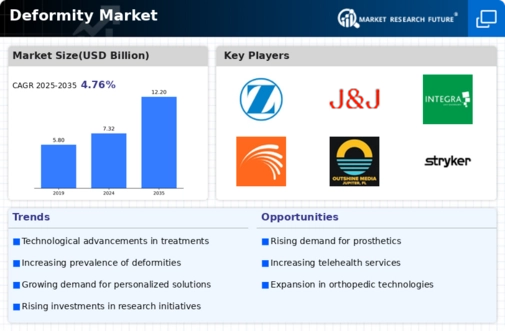
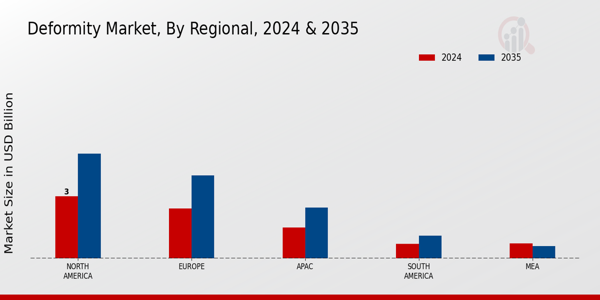

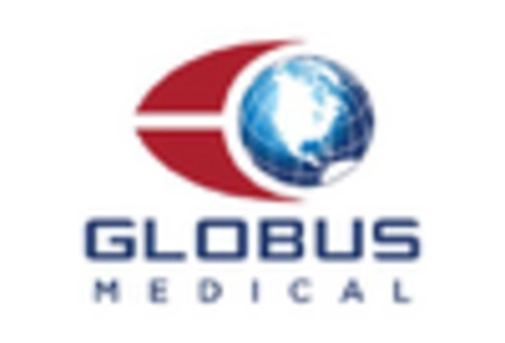


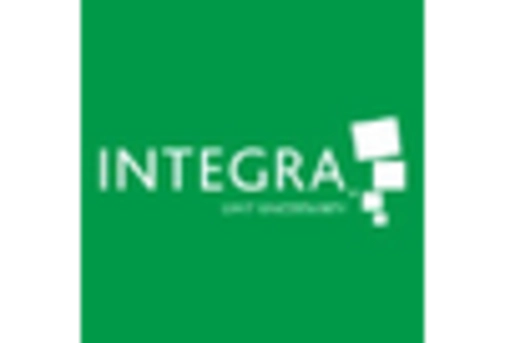


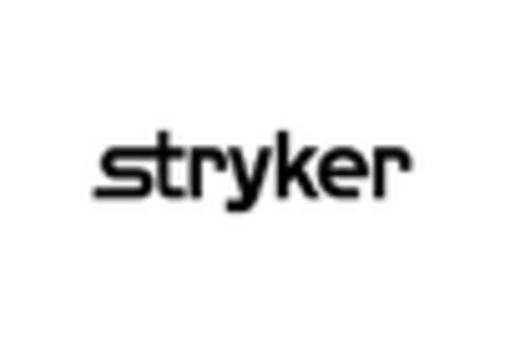

Leave a Comment